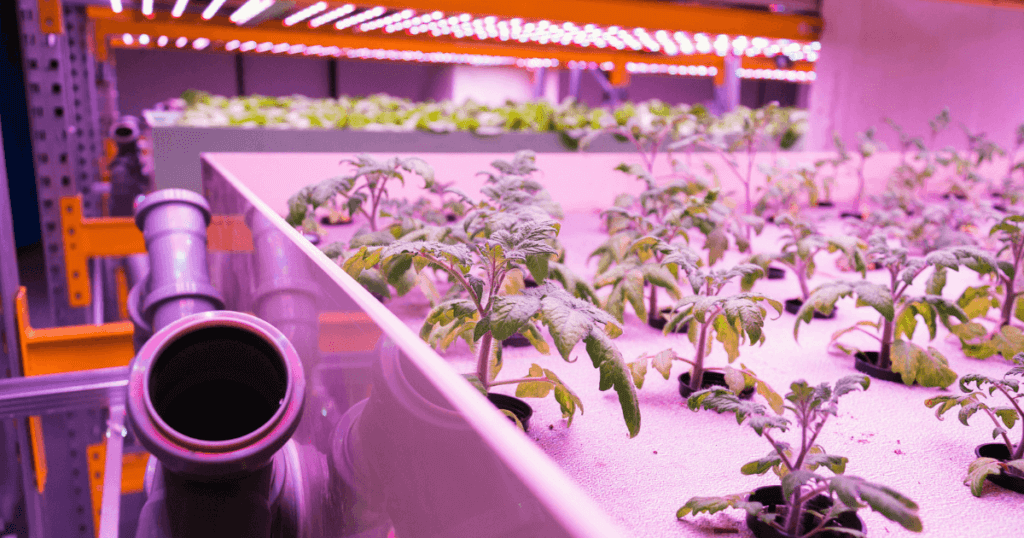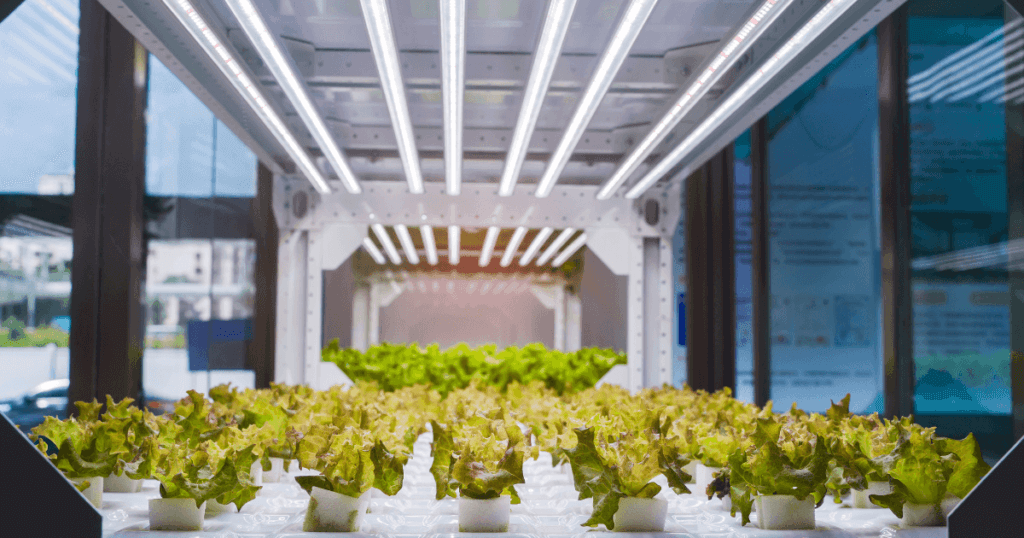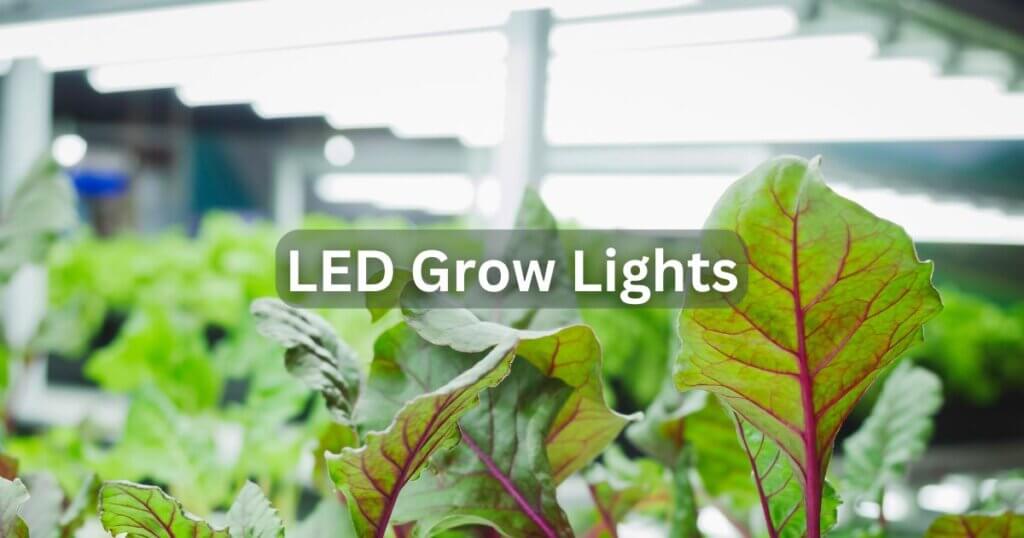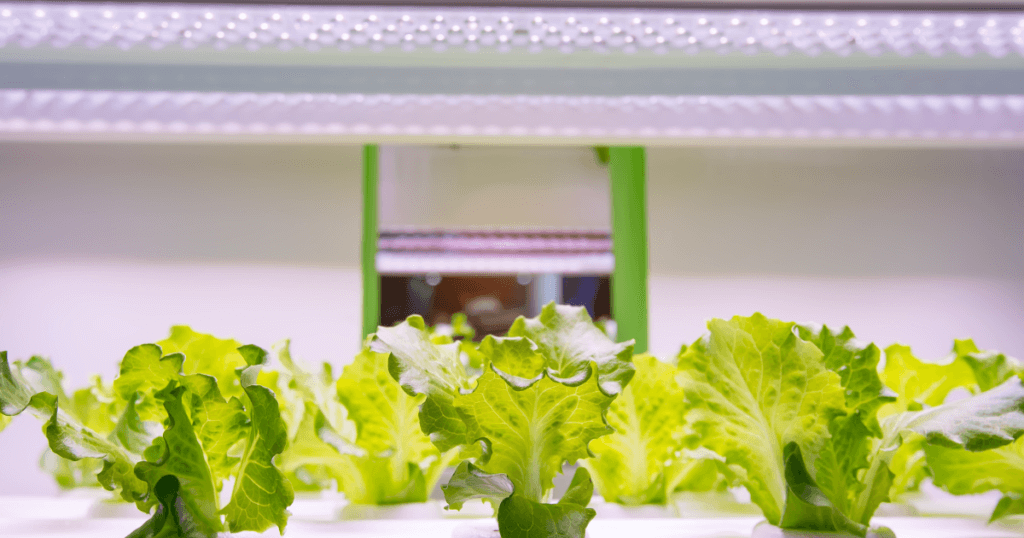Illuminating Indoor Farming with Lighting Systems

Some of the links in this post are affiliate links. As an Amazon Associate, we earn a referral fee from qualifying purchases—at no extra cost to you.
Indoor farming has revolutionized the agricultural industry by providing a controlled environment for cultivating crops year-round. One of the key elements that have contributed to the success of indoor farming is advanced lighting systems. Lighting systems designed specifically for indoor farming play a crucial role in providing the right spectrum and intensity of light necessary for plant growth and development. This article will explore the various aspects of lighting systems and their significance in illuminating indoor farming.
Table of Contents
Why Lighting Systems Matter in Indoor Farming
Maximizing Photosynthesis Efficiency
Light is one of the primary drivers of photosynthesis, the process by which plants convert light energy into chemical energy. Indoor lighting systems optimize photosynthesis efficiency by simulating the natural sunlight spectrum and adjusting the light intensity. This allows plants to grow faster and produce higher yields than traditional outdoor farming methods.
The MARS HYDRO TS1000 provides full-spectrum LED light, tailored to support photosynthesis at all plant stages. It’s designed to simulate natural sunlight while maintaining energy efficiency.
Tailored Spectrum for Plant Growth
Different stages of plant growth require specific light spectra. Lighting systems used in indoor farming can be fine-tuned to deliver the optimal spectrum for each growth stage. For example, blue light promotes vegetative growth, red light stimulates flowering, and a balanced combination enhances overall plant health. By providing tailored light spectra, lighting systems ensure that plants receive the right kind of light at each stage of their growth cycle.
The VIPARSPECTRA Vs2000 offers a customizable light spectrum, ideal for both vegetative and flowering phases. It also has dimmable features for flexible control.
Extend Growing Seasons
Lighting systems enable indoor farmers to extend growing seasons and cultivate crops regardless of the external climate. By providing a consistent and reliable light source, farmers can overcome limitations imposed by seasonal changes, enabling them to grow crops throughout the year. This increases productivity and ensures a steady supply of fresh produce for consumers, regardless of the season.
Types of Lighting Systems Used in Indoor Farming
High-Pressure Sodium (HPS) Lights
HPS lights have long been the go-to choice for indoor farming due to their efficiency and cost-effectiveness. These lights emit light in the yellow and red spectrum, making them suitable for the flowering stage of plant growth. HPS lights have a long lifespan and produce high output per watt, making them an economical choice for growers.
Light-Emitting Diodes (LEDs)
In recent years, LED lighting systems have gained popularity in indoor farming due to their versatility and energy efficiency. LEDs are available in a wide range of spectra, allowing growers to tailor the light output to the specific needs of their crops. LED lights also generate less heat than other lighting systems, reducing the need for additional cooling equipment and minimizing energy consumption.
Fluorescent Lights
Fluorescent lights, such as compact fluorescent lamps (CFLs) and T5 fluorescent tubes, are commonly used in small-scale indoor farming operations. These lights are affordable, easy to install, and produce low heat, making them suitable for smaller spaces. While fluorescent lights are less efficient than HPS lights or LEDs, they can still provide sufficient light for certain crops, such as herbs and leafy greens.
Key Factors to Consider in Lighting Systems for Indoor Farming
Light Intensity
The intensity of light plays a crucial role in plant growth. Different crops have varying light intensity requirements, and choosing a lighting system that can deliver the appropriate level of light output is essential. Light intensity is typically measured in foot candles or lux, and understanding the specific light requirements of your crops will help determine the ideal lighting system for your indoor farm.
Energy Efficiency
Indoor farming requires a significant amount of energy to power lighting systems continuously. Therefore, energy efficiency is a crucial factor to consider when selecting lighting systems. LED lights, for instance, are known for their high energy efficiency, consuming significantly less power than traditional lighting options. Investing in energy-efficient lighting systems can save long-term costs and reduce environmental impact.
The Spider Farmer SF-2000 is known for its high PAR output and low power consumption. It features Samsung diodes and is ideal for 2’x4’ or 3’x3’ grow spaces.
Heat Management
Excessive heat can negatively impact plant growth and increase the risk of plant diseases. Therefore, proper heat management is essential when using lighting systems in indoor farming. With their low heat output, LED lights help maintain optimal growing temperatures, reducing the need for additional cooling equipment. Adequate ventilation and air circulation systems should also be in place to dissipate any excess heat generated by the lighting systems.
This inline fan by AC Infinity maintains airflow and regulates temperature. It includes a smart controller that adjusts speed based on humidity and temperature.
Lifespan and Durability
Lighting systems for indoor farming are a long-term investment, and choosing systems with a long lifespan and durability is crucial. LED lights, in particular, have a longer lifespan than other lighting options, reducing the frequency of replacements and maintenance costs. Investing in high-quality lighting systems ensures that your indoor farm operates smoothly and efficiently over an extended period.
Adjustable Light Spectra
Different crops have varying light requirements, and the ability to adjust the light spectra can significantly impact plant growth and quality. Lighting systems that allow you to fine-tune the light spectrum through adjustable settings or interchangeable LED panels offer flexibility and customization. This feature particularly benefits farms growing crops with distinct light requirements.
The GROWSTAR grow light allows users to toggle between VEG and BLOOM modes, making it easy to match the spectrum to different crop needs.
Implementing Lighting Systems in Indoor Farming
Designing an Optimal Lighting Layout

Proper planning and design of lighting systems are essential for maximizing their effectiveness in indoor farming. Factors such as the growing area’s layout, the plants’ height, and the desired light distribution should be considered. Positioning the lights at the appropriate height and spacing ensures uniform light coverage and minimizes shading.
Light Timing and Photoperiod Control
Like outdoor plants, indoor crops require a specific photoperiod (light and dark cycle) for healthy growth and development. Lighting systems equipped with timers or programmable controls allow farmers to mimic natural light cycles and provide consistent photoperiods. This feature is essential for crops that require specific day-length conditions to initiate flowering or fruiting.
The digital timer like BN-LINK 7 Day Heavy Duty Digital Programmable Timer lets you automate your lighting cycles with up to 8 on/off programs per day and a backup battery.
Integration with Automation Systems
Incorporating lighting systems into an automation framework can streamline operations and improve efficiency in indoor farming. Automation systems can control the timing, intensity, and duration of lighting cycles, eliminating the need for manual adjustments. Integrating environmental sensors and monitoring systems allows for real-time adjustments based on temperature, humidity, and other environmental factors, ensuring optimal growing conditions.
The Inkbird IHC200 lets growers control lighting, heating, and humidity through a single smart controller, with app integration.
Conclusion
Lighting systems are vital in illuminating indoor farming by providing the necessary light spectrum and intensity for plant growth. These systems have revolutionized crop cultivation by maximizing photosynthesis efficiency, tailoring the light spectrum, and extending growing seasons. High-pressure sodium lights, LEDs, and fluorescent lights offer different advantages. They can be tailored to meet the specific needs of indoor farms. Light intensity, energy efficiency, heat management, and durability should be considered when selecting lighting systems. Proper planning, light timing control, and integration with automation systems enhance the effectiveness of lighting systems in indoor farming. With the right lighting systems, indoor farmers can optimize crop production, increase yields, and provide consumers with a steady supply of fresh, locally-grown produce.
FAQs – Lighting Systems
1. Can indoor lighting systems mimic natural sunlight completely?
While indoor lighting systems, particularly LEDs, can be customized to replicate the natural light spectrum closely, they do not perfectly mimic sunlight in all aspects. The intensity, duration, and spectrum can be controlled, but some natural nuances, like UV rays, may be harder to replicate. However, for most crops, these systems offer sufficient light for optimal growth.
2. How do lighting systems impact the taste and nutritional content of crops?
Lighting systems, particularly those that provide a tailored spectrum for each growth stage, can influence the flavor, texture, and nutritional quality of crops. For instance, red light may stimulate the production of certain compounds, while blue light can enhance leaf growth. By optimizing lighting, farmers can improve both the yield and the nutritional profile of crops.
3. What are the environmental impacts of indoor lighting systems in farming?
While indoor lighting systems, especially LEDs, are energy-efficient and reduce the need for pesticides and herbicides, their environmental impact largely depends on the source of the electricity used. If the power comes from non-renewable sources, the environmental benefits may be lessened. However, integrating renewable energy sources like solar power can mitigate these impacts and make indoor farming even more sustainable.
4. How do lighting systems affect plant flowering and fruiting cycles?
The timing and spectrum of light directly affect plant flowering and fruiting. Some crops need a certain photoperiod (light/dark cycle) to initiate these stages. Lighting systems with programmable timers and adjustable spectra can manipulate the light exposure to trigger flowering and fruiting, optimizing crop yields regardless of external seasons.
5. Are there any specific crops that require special lighting systems?
Yes, some crops require unique light conditions. For example, certain types of fruiting plants, like tomatoes, need higher red light ratios during the flowering phase, while leafy greens like lettuce thrive with more blue light during the vegetative stage. Tailoring the light spectrum to the specific needs of each crop is crucial for maximizing both quality and yield in indoor farming systems.
Other Useful sites related to indoor farming lighting systems
- Illuminating the Future of Indoor Farming: The Benefits of Properly Designed LED Lighting Systems: This LinkedIn article discusses the role of LED lighting in indoor farming, highlighting how different lighting types affect growth patterns and food taste.
- LED Lighting in Vertical Farming Systems Enhances Bioactive Compounds and Productivity of Vegetables Crops: This research paper explores the impact of LED lighting on the growth and quality of vegetables in vertical farming systems, emphasizing the benefits of specific light spectra.
- Everything You Should Know About Vertical Farming Lighting: This guide provides insights into vertical farming and the importance of lighting systems, explaining how different light spectra influence plant development.
- Growlink Smart Farm Blog | Lighting: This blog offers articles on various aspects of lighting in indoor farming, including the significance of Daily Light Integral (DLI) and how technology helps optimize lighting for improved plant health and yield.
- All About Lighting Systems for Vertical Farming: This article delves into the role of lighting in vertical farming, discussing how different light colors and spectra affect plant growth and development, and the advantages of using LED lights.
Videos on Lighting Systems for Indoor Farms











